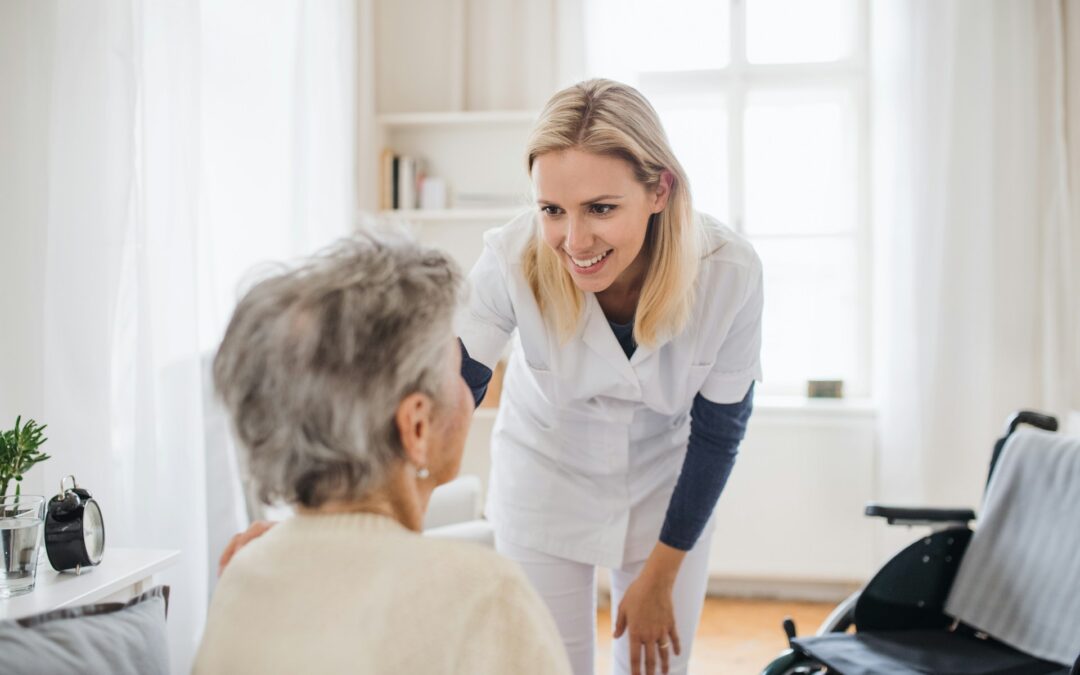Falls are a leading cause of injury among seniors, often resulting in hospitalization, decreased independence, and an overall decline in quality of life. As older adults experience age-related changes in physical strength, balance, and coordination, they become more susceptible to falls. This emphasizes the importance of implementing fall prevention strategies to minimize the risk of injuries and preserve seniors’ safety and well-being.
In-home care services, such as those provided by Honeybee Homecare in Roswell, GA, can offer invaluable support for seniors by identifying potential fall hazards in their living environment and assisting with tasks that may pose a risk to their safety. In this upcoming blog series, we will focus on fall prevention techniques tailored specifically for seniors and discuss the role in-home care services can play in promoting a secure and independent living environment for older adults.
Identifying Fall Risks in the Home
- Clutter and Obstacles: Keeping walking paths clear and removing unnecessary items or furniture can reduce the risk of tripping or stumbling. Regularly assess the living environment for clutter and reorganize as needed.
- Stairways and Walkways: Ensure that all stairways, hallways, and walkways have secure handrails, proper lighting, and non-slip surfaces to minimize fall risks. Installing motion-sensor lighting can also improve visibility during nighttime.
- Loose Rugs and Mats: Securely fasten area rugs with rubber backing or double-sided tape, or consider removing them entirely. In the bathroom, use non-slip mats or decals to improve traction on slippery surfaces.
- Bathroom Safety: Install grab bars in and around the tub, shower, and toilet to provide additional support. Consider using a raised toilet seat or a shower chair to reduce fall risks further.
Physical Fitness and Fall Prevention
- Strength Training: Encourage seniors to engage in strength-building exercises like squats, leg presses, and seated rises to improve muscle mass, which is crucial for maintaining balance and stability.
- Balance Exercises: Activities such as tai chi, yoga, or simple balance routines can enhance seniors’ equilibrium, reducing the likelihood of falls.
- Flexibility and Coordination: Incorporate stretching exercises and activities that involve coordinated movements, such as dance, to boost flexibility and agility, resulting in a decreased risk of injury.
- Consult a Medical Professional: Always consult with a healthcare provider before starting a new exercise program to ensure seniors can safely participate and consider enlisting the help of a physical therapist to design personalized routines.
In-Home Care Services as a Fall Prevention Resource
- Daily Task Assistance: In-home caregivers can support seniors with tasks that may pose a risk, such as bathing, dressing, or navigating stairs, minimizing the chance of a fall-related injury.
- Home Safety Assessments: Professional in-home care providers can evaluate a senior’s living environment for potential fall hazards and offer recommendations for modifications to improve overall safety.
- Adaptive Equipment Suggestions: In-home caregivers can identify the need for and suggest adaptive equipment, such as walkers or grab bars, to enhance mobility and security within the home.
- Medication Management: In-home care providers can help seniors manage their medications, as some medications can cause dizziness or drowsiness, increasing the risk of falls.
Fall Prevention Education and Awareness
- Know the Risk Factors: Familiarize seniors, their families, and caregivers with the common risk factors for falls, such as balance issues, vision problems, and medications, to promote active engagement in prevention strategies.
- Encourage Communication: Create an open dialogue about fall prevention, allowing seniors to express any concerns or fears and empowering them to take an active role in their safety.
- Educate Caregivers and Family Members: Provide resources and information to caregivers and family members, ensuring they understand the importance of fall prevention and can effectively contribute to a safer living environment.
- Community Resources: Utilize available community resources, such as falls prevention programs, to gather information, access services, and network with other families facing similar challenges.
Conclusion
Implementing effective fall prevention strategies for seniors is essential to maintaining their safety, well-being, and independence at home. By taking a proactive approach to identifying fall hazards, improving physical fitness, and enlisting the help of professional in-home care providers, seniors and their families can minimize the risk of falls and maintain a secure, independent living environment. Stay vigilant, informed, and engaged in fall-prevention efforts, empowering seniors to live safely and confidently in their homes.
Do you or a loved one need assistance in implementing fall prevention strategies within the home? Look no further than Honeybee Homecare, your trusted provider of in-home care services in Atlanta, GA. Our dedicated team of professionals is committed to supporting the safety and independence of aging adults, with personalized fall prevention strategies tailored to your unique needs and preferences. Contact us today to schedule a free in-home consultation and learn how our professional in-home care services can benefit you and your loved ones.

